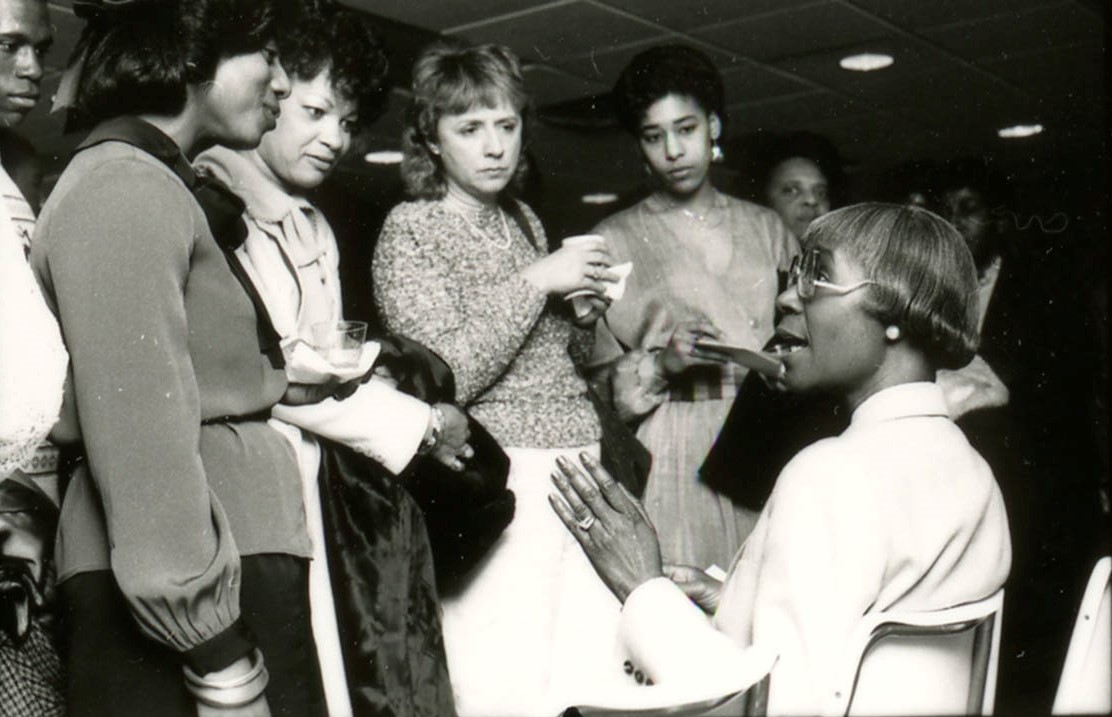March 2021 is the first Women’s History Month where the phrase “Madam Vice President” is a reality, and Kamala Harris’s election to the second-highest office in the land in the year of the 100th anniversary of Women’s Suffrage in the United States makes this year’s celebration extra meaningful. While major barriers to voting rights for all Americans remained after the passage of the 19th amendment in 1920 (and remain to this day), it was still an advance towards equality regardless of sex; it also helped make women’s representation in government and election to high office possible on a broader scale. While the road from suffrage to the Vice Presidency has been too long, remarkable women who demanded to have their voices heard paved the way for our current reality.
SCRC is fortunate to have extensive photograph collections that document 20th century government officials in Congress, the White House, and the Judiciary, including the Arthur E. Scott photograph collection, the Oliver F. Atkins photograph collection, and even our own George Mason University photograph collection. These collections include images of iconic women who blazed the trails followed by Vice President Harris and the current generation of women in politics, and some of these images feature in SCRC’s current digital exhibit, “The 19th Amendment in the 20th Century.”

US Senator Margaret Chase Smith shaking hands with an unidentified man, circa 1950s. Arthur F. Scott photograph collection, C0096, Box 4, Folder 4.

US Representative Patsy Takemoto Mink standing with the US Capitol in the background, May 10, 1965. Oliver F. Atkins photograph collection, C0036, Box 92, Folder 8.
Three legislators featured in the exhibit played important roles in bringing women’s voices into representative government. Margaret Chase Smith, a Republican from Maine, was the first woman elected to serve in both the House of Representatives and the Senate, and she stood up to Sen. Joseph McCarthy by speaking out on the Senate floor in 1950. Patsy Takemoto Mink, Democrat of Hawaii, was the first woman of color to serve in Congress, and she was one of the writers of Title IX, the landmark legislation mandating equality for women in educational institutions. And finally, Shirley Chisholm (Democrat of New York, and recently played by the brilliant Uzo Aduba in the F/X series “Mrs. America” – if you’re looking for something to watch this March, do yourself a favor!), was the first Black woman elected to the United States Congress and the first woman to run for the Democratic Party’s nomination for the Presidency.

Former US Representative Shirley Chisholm speaking with a group at George Mason University, 1985. George Mason University photograph collection, R0120, Box 29, Folder 35.
After her retirement, Representative Chisholm spoke as part of George Mason University’s Black History Month celebration in 1985, the event pictured in the two images we included in the exhibit. Perhaps her most well-known quote, “If they don’t give you a seat at the table, bring a folding chair” summarizes her tireless fight for equal representation regardless of the obstacles patriarchy and white supremacy placed in the way. This monumental Women’s History Month, may we all channel the determination of Shirley Chisholm, Margaret Chase Smith, Patsy Takemoto Mink, and their fellow women in Congress who refused to be silent.
Follow SCRC on Social Media and look out for future posts on our Facebook, Instagram, and Twitter accounts. To search the collections held at Special Collections Research Center, go to our website and browse the finding aids by subject or title. You may also e-mail us at speccoll@gmu.edu or call 703-993-2220 if you would like to schedule an appointment, request materials, or if you have questions.

